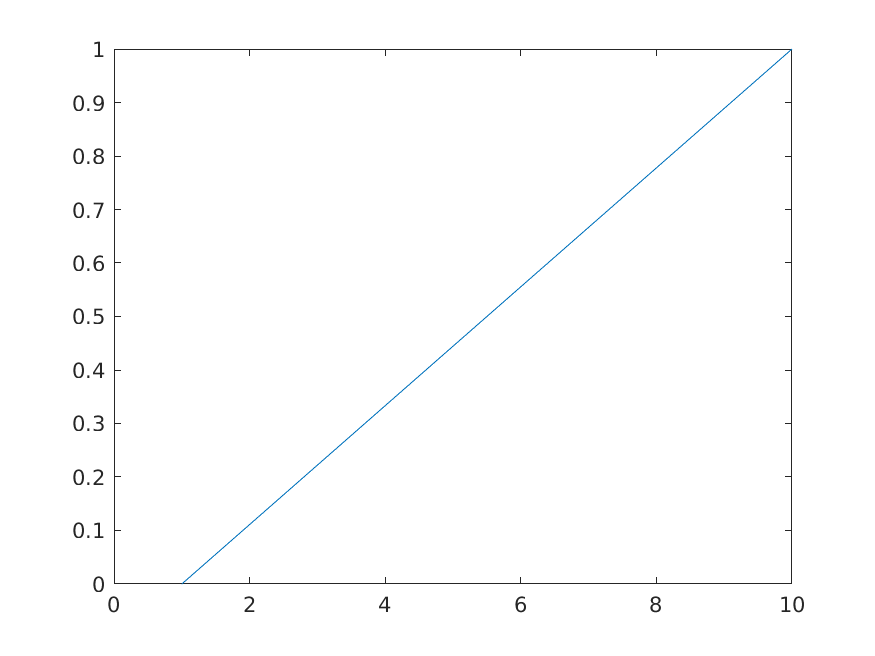- MATLAB is a high-level technical computing language and interactive environment for algorithm development, data visualization, data analysis, and numeric computation. You can use MATLAB in a wide range of applications, including signal and image processing, communications, control design, test and measurement, financial modeling.
- This video illustrates how to control and interact with a Simulink model from a Matlab script. This is useful if you would like to analyze data generated fr.
- Nov 08, 2017 MATLAB code is good for components best expressed with textual programming, such as array/matrix operations and machine learning. If you have algorithms written in MATLAB, you can call them in Simulink using MATLAB Function blocks. Simulink blocks are good for control algorithms, which are usually expressed as block diagrams. You can also take.
- MATLAB will execute the above statement and return the following result −. Finalvelocity = 196 The format Command. By default, MATLAB displays numbers with four decimal place values. This is known as short format. However, if you want more precision, you need to use the format command. The format long command displays 16 digits after decimal.
LiveLink™ for MATLAB® allows you to utilize the full power of MATLAB and its toolboxes in preprocessing, model manipulation, and postprocessing: Enhance your in-house MATLAB code with powerful multiphysics simulations. Base your geometry modeling on probabilistic or image data. Perform arbitrary statistical analysis on simulation results.
- Matlab Tutorial
- MATLAB Advanced
- MATLAB Useful Resources
- Selected Reading
A function is a group of statements that together perform a task. In MATLAB, functions are defined in separate files. The name of the file and of the function should be the same.
Functions operate on variables within their own workspace, which is also called the local workspace, separate from the workspace you access at the MATLAB command prompt which is called the base workspace.

Functions can accept more than one input arguments and may return more than one output arguments.
Syntax of a function statement is −
Example

The following function named mymax should be written in a file named mymax.m. It takes five numbers as argument and returns the maximum of the numbers.
Create a function file, named mymax.m and type the following code in it −
The first line of a function starts with the keyword function. It gives the name of the function and order of arguments. In our example, the mymax function has five input arguments and one output argument.
The comment lines that come right after the function statement provide the help text. These lines are printed when you type −
MATLAB will execute the above statement and return the following result −
You can call the function as −
MATLAB will execute the above statement and return the following result −
Anonymous Functions
An anonymous function is like an inline function in traditional programming languages, defined within a single MATLAB statement. It consists of a single MATLAB expression and any number of input and output arguments.
You can define an anonymous function right at the MATLAB command line or within a function or script.
This way you can create simple functions without having to create a file for them.
The syntax for creating an anonymous function from an expression is
Example
In this example, we will write an anonymous function named power, which will take two numbers as input and return first number raised to the power of the second number.
Create a script file and type the following code in it −
When you run the file, it displays −
Primary and Sub-Functions
Any function other than an anonymous function must be defined within a file. Each function file contains a required primary function that appears first and any number of optional sub-functions that comes after the primary function and used by it.
Primary functions can be called from outside of the file that defines them, either from command line or from other functions, but sub-functions cannot be called from command line or other functions, outside the function file.
Sub-functions are visible only to the primary function and other sub-functions within the function file that defines them.
Example
Let us write a function named quadratic that would calculate the roots of a quadratic equation. The function would take three inputs, the quadratic co-efficient, the linear co-efficient and the constant term. It would return the roots.
The function file quadratic.m will contain the primary function quadratic and the sub-function disc, which calculates the discriminant.
Matlab With Python
Create a function file quadratic.m and type the following code in it −
Matlab Without Gui

You can call the above function from command prompt as −
MATLAB will execute the above statement and return the following result −
Nested Functions
You can define functions within the body of another function. These are called nested functions. A nested function contains any or all of the components of any other function.
Nested functions are defined within the scope of another function and they share access to the containing function's workspace.
A nested function follows the following syntax −
Example
Let us rewrite the function quadratic, from previous example, however, this time the disc function will be a nested function.

Create a function file quadratic2.m and type the following code in it −
You can call the above function from command prompt as −
MATLAB will execute the above statement and return the following result −
Private Functions
A private function is a primary function that is visible only to a limited group of other functions. If you do not want to expose the implementation of a function(s), you can create them as private functions.
Private functions reside in subfolders with the special name private.
They are visible only to functions in the parent folder.
Example
Let us rewrite the quadratic function. This time, however, the disc function calculating the discriminant, will be a private function.
Create a subfolder named private in working directory. Store the following function file disc.m in it −
Create a function quadratic3.m in your working directory and type the following code in it −
You can call the above function from command prompt as −
MATLAB will execute the above statement and return the following result −
Global Variables
Global variables can be shared by more than one function. For this, you need to declare the variable as global in all the functions.
If you want to access that variable from the base workspace, then declare the variable at the command line.
The global declaration must occur before the variable is actually used in a function. It is a good practice to use capital letters for the names of global variables to distinguish them from other variables.
Example
Let us create a function file named average.m and type the following code in it −
Create a script file and type the following code in it −
When you run the file, it will display the following result −
- Matlab Tutorial
- MATLAB Advanced
- MATLAB Useful Resources
- Selected Reading
In MATLAB environment, every variable is an array or matrix.
You can assign variables in a simple way. For example,
MATLAB will execute the above statement and return the following result −
It creates a 1-by-1 matrix named x and stores the value 3 in its element. Let us check another example,
MATLAB will execute the above statement and return the following result −
Please note that −
Once a variable is entered into the system, you can refer to it later.
Variables must have values before they are used.
When an expression returns a result that is not assigned to any variable, the system assigns it to a variable named ans, which can be used later.
For example,
MATLAB will execute the above statement and return the following result −
You can use this variable ans −
MATLAB will execute the above statement and return the following result −
Let's look at another example −
MATLAB will execute the above statement and return the following result −

Multiple Assignments
You can have multiple assignments on the same line. For example,
MATLAB will execute the above statement and return the following result −
I have forgotten the Variables!
The who command displays all the variable names you have used.
MATLAB will execute the above statement and return the following result −
The whos command displays little more about the variables −
- Variables currently in memory
- Type of each variables
- Memory allocated to each variable
- Whether they are complex variables or not
MATLAB will execute the above statement and return the following result −
The clear command deletes all (or the specified) variable(s) from the memory.
Long Assignments
Long assignments can be extended to another line by using an ellipses (...). For example,
MATLAB will execute the above statement and return the following result −
The format Command
By default, MATLAB displays numbers with four decimal place values. This is known as short format.
However, if you want more precision, you need to use the format command.
The format long command displays 16 digits after decimal.
For example −
MATLAB will execute the above statement and return the following result−
Another example,
MATLAB will execute the above statement and return the following result −
Matlab With Excel
The format bank command rounds numbers to two decimal places. For example,
MATLAB will execute the above statement and return the following result −
MATLAB displays large numbers using exponential notation.
The format short e command allows displaying in exponential form with four decimal places plus the exponent.
For example,
MATLAB will execute the above statement and return the following result −
The format long e command allows displaying in exponential form with four decimal places plus the exponent. For example,
MATLAB will execute the above statement and return the following result −
The format rat command gives the closest rational expression resulting from a calculation. For example,
MATLAB will execute the above statement and return the following result −
Creating Vectors
A vector is a one-dimensional array of numbers. MATLAB allows creating two types of vectors −
- Row vectors
- Column vectors
Row vectors are created by enclosing the set of elements in square brackets, using space or comma to delimit the elements.
For example,
MATLAB will execute the above statement and return the following result −
Another example,
MATLAB will execute the above statement and return the following result −
Column vectors are created by enclosing the set of elements in square brackets, using semicolon(;) to delimit the elements.
MATLAB will execute the above statement and return the following result −
Creating Matrices
A matrix is a two-dimensional array of numbers.
In MATLAB, a matrix is created by entering each row as a sequence of space or comma separated elements, and end of a row is demarcated by a semicolon. For example, let us create a 3-by-3 matrix as −
MATLAB will execute the above statement and return the following result −